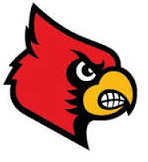Pediatric Locomotor Training Bladder Study
| Status: | Recruiting |
|---|---|
| Conditions: | Other Indications, Hospital, Orthopedic |
| Therapuetic Areas: | Orthopedics / Podiatry, Other |
| Healthy: | No |
| Age Range: | 2 - 18 |
| Updated: | 6/17/2018 |
| Start Date: | April 26, 2018 |
| End Date: | April 30, 2020 |
| Contact: | April Herrity, PhD |
| Email: | aprilherrity@catholichealth.net |
| Phone: | 502-587-4461 |
Impact of Activity-Dependent Plasticity on Bladder Function After Pediatric Spinal Cord Injury
Bladder dysfunction is one of the most important factors influencing duration and quality of
life in children with spinal cord injury. Effective bladder control comprises a major aspect
of a child's life with SCI and is especially challenging due to the rapid changes in a
child's physical and cognitive development. Urological consequences secondary to a neurogenic
bladder are responsible for many clinical complications post-spinal cord injury, including
repeated urinary tract infections, autonomic dysreflexia, lifelong urologic care, and many
hospitalizations. Alternative approaches to bladder management that focus on recovery of
function and age-appropriate independence are needed. Prior research findings in our lab in
adult participants indicate a benefit of locomotor training on bladder function. The purpose
of this study is to determine with quantitative unbiased urodynamic outcome measures if
locomotor training, provided to children with spinal cord injury, impacts the developing
urinary system.
life in children with spinal cord injury. Effective bladder control comprises a major aspect
of a child's life with SCI and is especially challenging due to the rapid changes in a
child's physical and cognitive development. Urological consequences secondary to a neurogenic
bladder are responsible for many clinical complications post-spinal cord injury, including
repeated urinary tract infections, autonomic dysreflexia, lifelong urologic care, and many
hospitalizations. Alternative approaches to bladder management that focus on recovery of
function and age-appropriate independence are needed. Prior research findings in our lab in
adult participants indicate a benefit of locomotor training on bladder function. The purpose
of this study is to determine with quantitative unbiased urodynamic outcome measures if
locomotor training, provided to children with spinal cord injury, impacts the developing
urinary system.
Our overall hypothesis is that spinal cord injury-induced bladder dysfunction, facilitated by
the loss of supra-spinal connections and subsequent alterations of the lumbosacral circuitry,
can be ameliorated through activity-based therapy that regulates the state of
detrusor-sphincter dyssynergia and normalizes release of neurotrophic factors known to
contribute to bladder hyper-reflexia. The primary study aim is to determine the effects of
weight-bearing task-specific training for locomotion (stepping on a treadmill) after
incomplete and complete spinal cord injury in children on bladder storage, voiding,
biomarkers, and quality of life (parent-reported during baseline and exit interview). A
secondary aim is to develop a scale for classifying bladder recovery after spinal cord injury
based either on the pattern of storage and voiding prior to injury (if the child had bladder
control prior to injury) or on established patterns of micturition development (if the child
was injured prior to experiencing bladder control).
the loss of supra-spinal connections and subsequent alterations of the lumbosacral circuitry,
can be ameliorated through activity-based therapy that regulates the state of
detrusor-sphincter dyssynergia and normalizes release of neurotrophic factors known to
contribute to bladder hyper-reflexia. The primary study aim is to determine the effects of
weight-bearing task-specific training for locomotion (stepping on a treadmill) after
incomplete and complete spinal cord injury in children on bladder storage, voiding,
biomarkers, and quality of life (parent-reported during baseline and exit interview). A
secondary aim is to develop a scale for classifying bladder recovery after spinal cord injury
based either on the pattern of storage and voiding prior to injury (if the child had bladder
control prior to injury) or on established patterns of micturition development (if the child
was injured prior to experiencing bladder control).
Inclusion Criteria:
- Supra-sacral, non-progressive spinal cord injury
- Bladder dysfunction post-injury
Exclusion Criteria:
- Use of anti-spasticity medications or unwillingness to wean off of medications
- Botox (onabotulinumtoxinA) in the bladder within 9 months of the study
- Bladder dysfunction or urinary tract impairment prior to injury
We found this trial at
1
site
University of Louisville The University of Louisville is a state supported research university located in...
Click here to add this to my saved trials
